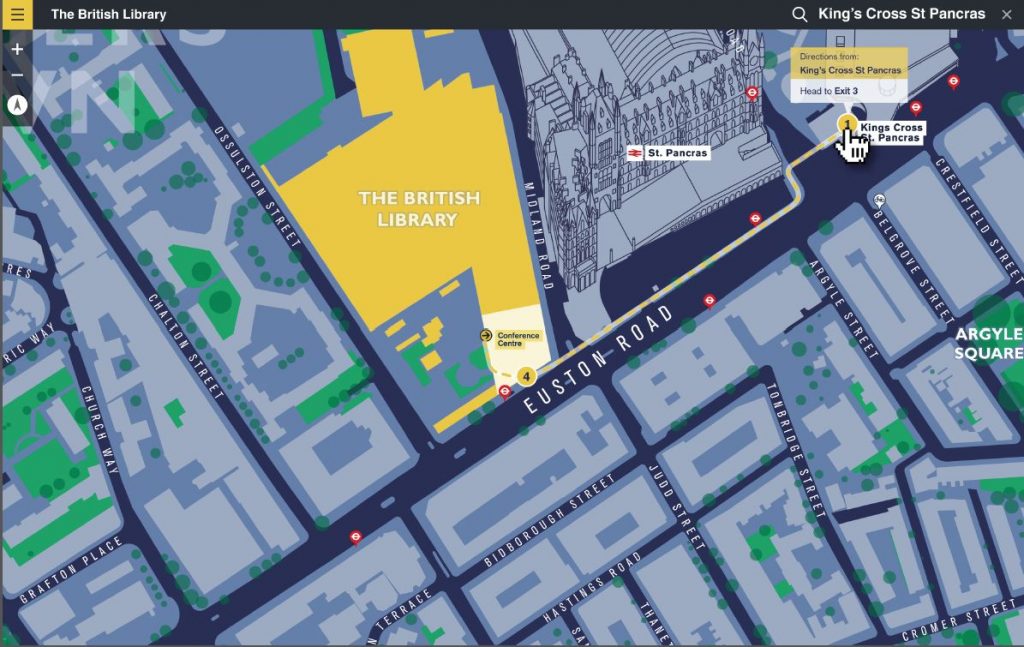Last Updated on April 20, 2024 by Nasir Hanif
If you are looking for a digital mapping solution, you have come to the right place. Learn more about the benefits and components of a digital mapping solution and the process of creating a digital map. You will also learn about the costs associated with implementing this technology. Having a digital map can dramatically improve the management of your project.
Benefits of a digital mapping solution
Digital mapping solutions can be customized to meet the needs of different businesses. They can display street-level maps and information about places of interest. They can also feature different layers of information and can be updated easily and automatically. This allows businesses to improve their logistics. Many companies are already using digital maps to enhance their business processes.
These solutions provide businesses with detailed data that allows them to create a complete picture of their customer base and target demographic. This data allows managers to formulate strategic solutions for various problems. Using these solutions, they can develop effective marketing strategies. They can also assess how many customers are in certain geographical areas.
Digital mapping also provides a unified framework for managing field data. In addition, it provides greater spatial precision than traditional methods. It can also store many different types of data, including geospatial and attribute data, as well as photos and sketches. It also makes it possible to view and use 3-D data.
The modern executive landscape places a high premium on data-driven decision-making. To support this, managers rely on complex technology solutions that prepare the data for decision-making. These solutions can be objective and help make better decisions. Further, they can eliminate the need for multiple systems. They also help reduce risk.
Components of a digital mapping solution?
Modern mapping solutions draw on a wide variety of technologies to provide accurate, dynamic 3D renderings of the world. Some of these technologies form the foundation of a digital mapping solution, while others add unique features to existing maps. A geographic information system (GIS) provides a set of tools and a complete ecosystem for geodata processing. A custom internal GIS solution can enhance the capabilities of open-source tools and rapidly convert data for specific use cases.
One advantage of digital mapping is that it allows researchers to integrate field data management and analysis into a single software platform. This greatly increases the spatial precision of observations. This data can include geospatial and attribute data, photos, sketches, and 3-D models. With these tools, field teams can collect more detailed data and make more accurate maps.
Digital mapping is a cross-disciplinary methodology that is applicable to almost any type of geography or related field. These tools are increasingly being used for research and publication purposes in all types of disciplines. HASS researchers, for example, have long used map-making as a part of their research.
Digital mapping can be used to optimize warehouse management, space planning, fleet tracking, and more. It can also be used to predict future changes to a physical area before they happen. In addition, digital maps can be integrated into existing ERP software. Digital maps have the potential to revolutionize the world of business analytics and digitization. But they need the proper integration and development.
Digital mapping is a critical technology for improving the experience of travelers and employees. It helps employees find their way easier, and passengers can quickly and easily find the services that they need. It also reduces customer complaints.
Process of creating a digital map
The process of creating a digital map begins by gathering and processing data. This data is commonly derived from aerial photographs or satellite imagery. This data is generally in raster form, with each pixel representing one square meter of real-world area. Creating the various layers in the map is the next step. Using these layers, breaks of slope in the landscape can be used to identify individual landforms.
A digital map can be created for a variety of purposes. For example, a researcher may want to create a map to analyze place and site data. It can also be used to create a historical image of a place. It is important to note that digital mapping is a cross-disciplinary process, which means that it is relevant to anyone doing research on a particular location. Many of the tools used in digital mapping originate from geology, although some are now widely used in other fields.
A good map will have well-designed labels. Symbolizing data is the fun part of the process. It is important to choose the right layer for the labeling and use appropriate cartographic tools to edit them. Labeling features without layers is also possible using point data. You should also be sure that the labeling is turned on for each layer. In addition, different label classes should be created.
Once you have the source data, you can start creating your map. Most maps will contain several layers. You can use the same data for several layers, or you can combine like datasets into one layer.
Cost of implementing a digital mapping solution
Implementing a digital mapping solution can be expensive, especially when it involves implementing advanced technologies. However, the benefits can far outweigh the cost. For example, an organization that uses location-based solutions is likely to see a higher conversion rate. Also, a solution that is easy to use and integrated into the company’s existing website can save time and money in the long run.
In order to understand how much implementing a digital mapping solution will cost, you must first understand your business needs and use cases. Once you have a clear picture of what you need, you can then determine what technology to use. You may also want to consider the software’s compatibility with existing ERP software so that you can integrate it into the existing system.
High-quality maps require a fast system for processing data. Advanced technologies such as SLAM algorithms are crucial for the processing of these maps. Furthermore, a digital mapping solution must support OTA updates. This is important because drivers need their maps up-to-date at all times. Fortunately, there are new technologies that allow them to receive these updates.
Adding digital mapping technology to your organization is a major undertaking. A successful implementation requires thorough training and a clear definition of the project. It also requires commitment and rapid deployment. It is vital to consider how retail mapping software will be integrated into the company’s existing processes.
There are many benefits to implementing a digital mapping solution. First, it can help you get better results from your existing data. By automating these processes, your team will have the data they need in less time. Second, it will simplify the use of the end product. Third, you can take advantage of automated tools that can help you create high-quality maps.
Future of digital mapping
Digital mapping has many applications. It can improve transportation and help cities modernize, and it can even improve the efficiency of the military. However, the future of digital mapping depends on several factors. The biggest challenge facing the industry is acquiring authoritative map data sets. While several government agencies offer map data for free, this data needs to be transformed to OSM tagging standards and made error-free. To address this challenge, developers are developing AI-powered solutions.
Currently, digital maps are largely based on satellite imagery or aerial photography. But in the future, we will see maps with real-time data collected by sensors in cars and planes. These sensors will help developers produce better maps and provide information to drivers. In addition to improving digital maps, many companies are integrating them into cars and planes, enabling them to see and record everything in real time.
These tools are useful for both professionals and amateurs and can help educators make maps more accessible to students. Teachers have found that students from diverse backgrounds can use these systems to make their assignments more interactive. These systems also enable educators to encourage creative thinking. For example, students can use digital mapping to show how spatial relationships affect human action and interaction. This technology is especially helpful for teaching history, as it reminds students of the interaction between the past and present.
Increasing demand for digital maps has fueled growth in the market. This growth can be attributed to the growing demand for real-time tracking systems and improving user-friendliness. Additionally, the technology is useful for a variety of industries, including agriculture, construction, and government & homeland security.

